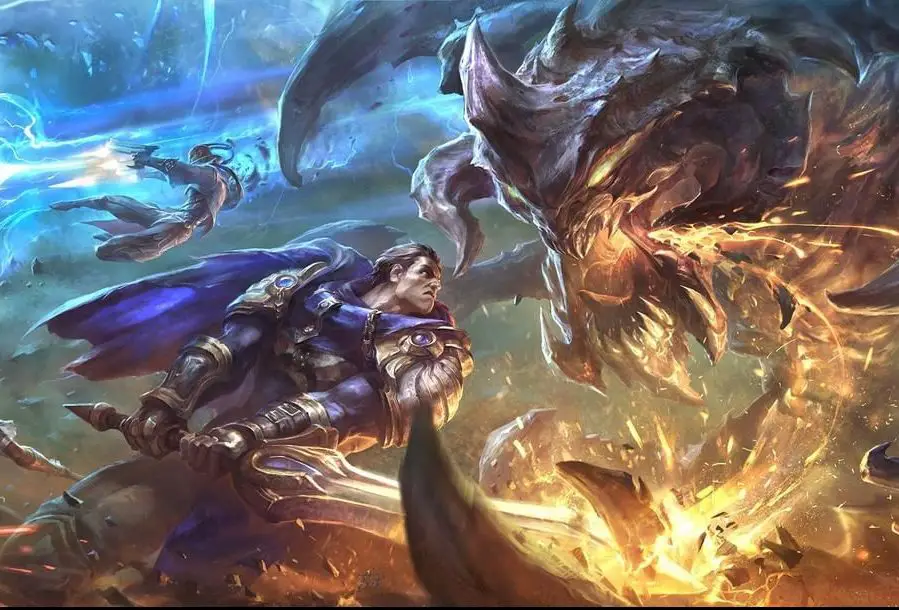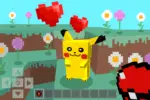It was the end of the year — much had happened and failed to happen, and as the snow perforated the dark night outside my window, I looked for something to distract myself. Of course, due to the state of things, I couldn’t go outside nor plan a proper meeting with friends. So, I turned to what entertainment many turn to — watching Netflix show after Netflix show, movie after movie — yet nothing succeeded in holding my attention. It all felt so ephemeral, like cheap candy; the media would be mildly pleasant for some time and then, abruptly, cease to exist in my psyche. A few days prior a friend of mine had invited me to a game of League of Legends, and while at the time I had declined, I decided in that moment of extreme boredom and indecisiveness that there was nothing better to do. Quickly, I was swept up in the infinite hours of addicting content and, without breath, asked myself: What is it about this game that is so addictive?
Now as you may know, League of Legends is an immensely popular video game of the MOBA (multiplayer online battle arena) genre. Each competitive match takes place in a square-like map containing three lanes: one at the top, the bottom and in the middle. Imagine a square in your mind. The top and bottom lanes span the entirety of the perimeter, each consisting of half the total perimeter, and the middle lane is the diagonal line between the two vertices connecting the top and bottom lanes — it may be convenient to Google the League of Legends map if this visualization is difficult.
In much of the surface area between these lanes lies what is known as the jungle, which is filled with camps of enemies controlled by artificial intelligence. The map in total is not very large, at least not compared to the player-versus-player (PvP) maps of games in other genres. Additionally, in League of Legends, this map is the only map used in competitive play. Therefore, one would think that this single, relatively tiny map used in competitive League would get old quickly — yet its 115 million players would beg to differ. Clearly there is some secret sauce that manages to keep this one map, which has had little functional change since the advent of the genre over a decade ago, fresh and enticing.
Another salient aspect of this investigation is League of Legends’ monetization scheme. It may surprise you that, despite the game being entirely free to play, it raked in over $1.75 billion in revenue last year alone. “Avengers: Endgame,” the highest-grossing movie of all time, earned $2.79 billion total. How on earth can a game that only really sells cosmetic add-ons make so much money? Evidently there is something, too, in that secret sauce that not only manages to get players to keep playing, but to also to open their wallets while they play. I have taken the liberty to explore both these topics and have played much and purchased many in-game cosmetics in preparation for this article. As a result of this research, I have come to a conclusion that will shed light on the ways in which video games as a whole maintain and profit from their player base.
Interestingly, League of Legends’ magnetism and profitability are so intertwined that it is nearly impossible to speak of one without the other. However, with my inexperience with the game and its iterations, I feel as though I would be remiss if I did not enlist the help of someone more knowledgeable. For this task I have leaned on a friend of mine, Matt, a self-proclaimed League addict — here it is important to note that his insight and experience is indicative of larger trends among the League player base. From his testimony and my own exposure to League’s mechanics, there seems to be three main facets in why people stay: gameplay variety, community attachment and sunk cost.
The small size of the Summoner’s Rift — League’s one competitive map — is immensely misleading. While there is basically no variation of the map from game to game, the ways in which a competent player plays that map changes depending on what character — or champion — they’re playing and what champions they are up against. Consider this: When each match-up is different in some respect, and there are 132 champions in the game, the Summoner’s Rift becomes immensely dynamic. This, too, excludes champion synergies, which add more combinations to an already staggering number. It also steepens the learning curve; to be the best player they can be, one must, in theory, understand each champion’s ability set, or kit. This includes four abilities and one passive for every champion, meaning there are 660 different actives and passives to comprehend — significantly more, actually, because a great player knows how these mechanics interact with each other rather than just knowing each mechanic individually.
And there lies even more depth and variation in this formula, because merely understanding mechanics and combos isn’t enough to be good at the game. One could study endlessly the rules and statistical trends of baseball — they still wouldn’t be a good player, for being a good player means both understanding on a conceptual level a game’s mechanics and being able to execute those mechanics in real time. I play a champion named Qiyana and could tell you in detail what each of her abilities do, but still, when it comes down to executing her E-Q-W-Q combo — where each letter corresponds to an ability — when it matters, I screw it up regularly.
As if this weren’t enough complexity, items too are extremely important factors in gameplay. Each character can buy up to six items from a pool of around 175, and these items synergize with each champion’s kit and against opponent’s kits in different ways. I haven’t even discussed rune pages, where players can choose from dozens of active and passive buffs, map vision and objectives, roles or the ever-evolving meta that a good player understands and keeps up with.
So it should come as no surprise that there is a lot to be done in League of Legends, and much of it is engaging enough to keep people working on mastering the game for thousands of hours. The game is also patched — or updated — regularly, which shakes the gameplay up. Matt notes that part of what makes League so addicting is “the variety the game brings — ‘cause you’ll never play the exact same game twice.” It is precisely this quality that truly separates League of Legends from other video games, which Matt notes begin to feel repetitive after a while. As a result of this distinct identity, a massive community has formed around League of Legends and especially around “pro play,” or professional League. The entire community gathers to watch the best players from around the world compete for millions of dollars of prize money.
To convey just how gargantuan the scope of these competitions are, the 2020 LCS Summer Split peaked at 34.67 million total hours of watch time, and in 2019 had more viewers worldwide than the Super Bowl. League pro play is like the worldwide NBA, hosting 12 different leagues from North America to Vietnam to Korea, which people can either stream at home or travel to and watch in a stadium. Professional League players sign contracts worth millions and are even eligible for U.S. athlete visas. The game’s presence on YouTube, Reddit and all major social networks also cannot be understated. Communities on these sites often form around individual champions, as each one has a unique story that fits into an entire mythos spanning all 132 champions. Matt elaborates how, “There’s also the culture of one, the Esports, and two, the lore/fantasy world. ‘Cause League leases their IP to indie devs to make cool games with the lore, and their art team is f—ing amazing.”
All of this time investment into League of Legends and its community makes for serious dedication to both the champions and the game at large. Chances are, too, that champion you’ve become so dedicated to has a skin or 15 (if you play Ezreal), and who doesn’t want to look cool when they have spent so long looking at a particular character model? As Matt notes, Riot — the company behind League of Legends — has a truly incredible art team, so many of the skins — or model re-designs — available for sale are great, though resistible for the average consumer. There are, though, some skins that are drop-dead gorgeous, with complete animation and particle effect overhauls. These skins in particular usually run anywhere from $10 to $25 and seem like a minor investment, especially since, as mentioned before, the game is completely free to play.
Additionally, some champion models were made over 10 years ago, so some base models are eyesores — buying a skin, in this case, is almost a necessity if a player wants to spend the hours mastering that champion. What many don’t realize is that, as soon as they close the premium shop and play their first game with their first skin, Riot owns their soul. For once that barrier is broken, they are more open to throwing League another $10 or $20 every time a new skin comes out; before long they have spent hundreds and never realized it. Matt refuses to even look at the total amount invested; I share the same sentiment, as the realization that one has spent more on a free-to-play game than any other is a painful one indeed.
What many turn to for solace — for proof that their investment of time and money has paid off — is the competitive ladder. While League professionals are at the top of the top in terms of skill and almost exclusively play among each other, any player can try their hand at climbing the ranks in the general population. Each rank comes with a virtual badge, an ornament representing a reward for hard work and improvement.
The ladder — or League’s general-entry competitive scene — works similar to the Elo system in chess, where a victory results in a gain of Elo points — LP in League — and a loss results in a loss of Elo points. Each rank is separated into brackets of Elo, such that all players within a certain Elo range and in a certain region are a particular rank.
For example, if I am between 850 and 950 LP and playing in the North American (NA) region, my rank is NA Bronze VI. If I am able to exceed 950 LP, I can rank up to Bronze V or if I lose too much LP from losing, I am demoted to NA Bronze VII. Climbing the ladder is one of the main sticking points for League of Legends players, as it gives them access to a quantified evaluation of their skill and therefore of their improvement. For many, there’s no better feeling than being a high-ranking, expensive-skin-donning player pubstomping lobbies with their thousands of hours of experience.
And it is the culmination of all the previous points that constitute the final, and strongest, facet of League’s magnetism: sunk cost. After investing those hundreds of dollars in skins, those thousands of hours mastering champions — after making friends in League’s many communities, watching countless professional league games and finally achieving that shiny new rank, symbolizing your achievement — leaving, after all of this, would render it all worthless. There would be a massive, gaping hole in your life, since all those evenings reading guides and those late nights spent practicing are now not applicable to anything.
The epiphany that the time spent doing all of those things has been completely wasted is soul-crushing. I have heard Matt and other hardcore League players speak of how they could’ve learned a language in the time they spent, or an instrument perhaps. Yet all they have to show is a rank and skill at one game in particular, so if they were to leave, they would have nothing to show for their commitment. It’s the same fallacy that commands people with gambling addictions, and as such I needn’t belabor the strength of it. So these players keep coming back, time and time again, so as to justify their investment — and at the same time, digging that hole deeper and deeper by the hour.
It is for these reasons League of Legends is a masterpiece, from both a business and gameplay perspective. This is not to say that it’s perfect — of course a multiplayer game with 132 playable characters will have balance issues. But, stepping back, it is clear to see that few other games can match League’s complexity and profitability, even considering that in-game purchases give no tangible gameplay advantage.
It is no wonder why it has grossed such an obscene amount, keeping in mind its vibrant and active community, its engaging mechanics and its staggering roster. At the same time, there exists an extremely unfortunate underbelly of players who feel trapped to some extent by their investment in these mechanics and communities. It is these players that tend to be the ones that are addicted, and Riot is happy to accept the time and money they can’t help but give.

















